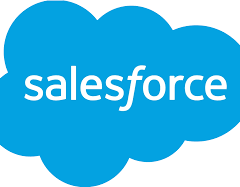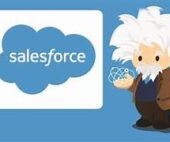The Winter ’25 updates and retirements are available through the pre-release program. On August 30, 2024, Sandboxes will be upgraded, providing your organization with the Winter ’25 release experience.
Connecting Unified Knowledge to Third-Party Systems
Steps to Implement: Before adding a connector, review the connector requirements in the Zoomin documentation. Then, in Setup, enter “Unified Knowledge” in the Quick Find box and select it. Click “Add a Source” and choose your desired connector.
Help Agents Prioritize Cases with Milestone Tracking
Enhance your agents’ ability to prioritize cases and maintain high service standards by tracking the time remaining for case milestones. With the “Time to Next Milestone” column in the case list view, agents can easily identify overdue, nearly due, or paused cases. This feature previously lacked a clear prioritization indicator, especially when managing multiple cases.
Steps to Implement: Open the case list view and check the “Time to Next Milestone” column to see the time left for the current milestone and when the next one begins. Use sorting and filtering options to focus on cases with overdue or paused milestones.
Feature Renaming and Retirement
- Resync Events: Renamed in User Health Status Operations Console.
- Operations Console: Now renamed as Pricing Operations Console.
- Retired Features:
- Social Customer Service Starter Pack
- Embedded Appointment Management (Retirement Date: June 17, 2025)
- Embedded Flows
- Close Date Predictions
- Cadence Builder Classic (1.0)
- Externally Built Models in Einstein Discovery
- Einstein Automated Contacts (Retirement Date: February 2025)
- Salesforce Functions (Retirement Date: January 31, 2025)
- Legacy Chat (Retirement Date: February 14, 2026)
- Salesforce for Outlook (Retirement Date: December 2027)
Developer’s Point of View
Quickly Develop Lightning Web Components with Real-Time Preview (Beta)
Speed up LWC development using Local Dev (beta), which provides a real-time preview of your Lightning app or Experience Cloud site. The preview updates automatically as you make code changes, helping you iterate faster without needing to deploy or refresh manually. This new experience is an improvement over the limited capabilities of the LWC Local Development Server.
Steps to Implement: To enable Local Dev, go to Setup, search for “Local Dev” in the Quick Find box, and select it. Then, enable Local Dev (Beta) for all users in your org.
Gain Insight into Component Code with LWS Distortions
Debug your Lightning Web Security (LWS) components by toggling specific distortions on and off to observe different behaviors.
Steps to Implement: Enable debug mode in your Salesforce org. With your component loaded in a browser, open the developer console, list flags using $LWS.namespaces.c.distortions, and toggle distortions by setting their associated flags.
Develop Lightning Web Components with TypeScript (Developer Preview)
Improve productivity and code quality by developing LWCs with TypeScript. This new capability allows you to write and convert components using TypeScript.
Steps to Implement: Install TypeScript v5.4.5 or later. Ensure your project has a tsconfig.json file with target set to “ESNext”. Configure the paths option for each LWC module. The Lightning Language Server extension for VS Code can automate this setup for Salesforce DX projects.
Prepare for Native Shadow DOM in Base Lightning Components
Salesforce is updating base Lightning components to support native shadow DOM for better performance and standards compliance. Ensure your tests do not depend on the previous internal DOM structure of these components.
Track Apex Exceptions with Free-Tier Event Monitoring
Now, you can track unhandled exceptions in Apex code using free-tier Event Monitoring, which provides detailed logs for troubleshooting.
Steps to Implement: Review and analyze Apex Unexpected Exception event logs instead of relying on email alerts.
Understand SOQL Error Changes
Recent updates may affect Apex code that parses SOQL error messages, particularly dynamic SOQL code.
Steps to Implement: Review these changes and update your code as necessary to handle new error messages.
Consistent Behavior When Iterating Sets
In API version 62.0 and later, modifying set elements during iteration will throw an exception, providing more consistent behavior.
Example Code:
apex
Copy code
Set<String> set_string = new Set<String>{‘one’, ‘two’, ‘three’};
for (String str : set_string) {
System.debug(str);
set_string.remove(str); // This will throw an exception in API 62.0+
}
Write Mock SOQL Tests for External Objects
Increase your Apex test coverage and quality by mocking SOQL queries for external objects using the new SOQL stub methods.
Steps to Implement: Create mock test classes by extending the System.SoqlStubProvider class and overriding the handleSoqlQuery() method. Register the mock provider using Test.createSoqlStub().
Process Platform Events at Scale with Parallel Subscriptions
Improve the processing of high-volume platform events in Apex triggers by using parallel subscriptions, allowing simultaneous event processing.
Steps to Implement: Use the Tooling API or Metadata API to configure parallel subscriptions by specifying the event field for partitioning and the number of partitions in PlatformEventSubscriberConfig.
Salesforce Flow Enhancements
- Update Record Collections in Screen Flows: Use the Repeater component to modify existing record collections in a screen flow.
- Disable Screen Component Fields at Runtime: Disable fields on specific screen components using the Disabled attribute.
- Multiple Selections with Choice Lookup: The Choice Lookup component now supports single or multiple selections.
- Custom Component Labels in Flow Builder: Custom components now display labels or API names directly in Flow Builder for easier identification.
- CC and BCC Options in Send Email Action: Add CC and BCC recipients in the Send Email Action, with support for up to 150 email addresses.
Flow Orchestrator Enhancements
- View Orchestration Details in Automation App: Manage orchestrations and associated runs directly in the Automation Lightning app.
- Manage Steps in Orchestration Stages: Reuse steps within stages, reorder them, and view step descriptions without opening the Properties panel.
Customize the Flow Orchestration Work Guide Component
Overview: Tailor how the Flow Orchestration Work Guide component appears to users based on their assigned tasks. You can customize the component differently for each record page it’s added to. Note that changes you make will not affect the component’s appearance in Lightning App Builder.
Features:
- Set a title for the component and define a default sort order for orchestration work items.
- Control the visibility of the orchestration run name, stage name, and step name for all displayed work items.
- Optionally hide the component for users who have no assigned work items.
Availability: Applies to Lightning Experience in Enterprise, Performance, Unlimited, and Developer editions.
Customize SMS One-Time Password Delivery for Experience Cloud Sites
Overview: Enhance identity verification for external users by creating an Apex handler to send one-time passwords (OTPs) via SMS. Personalize the content and short code of the message as needed.
Updates:
- This feature is now generally available with performance improvements and bug fixes.
- It supports LWR, Aura, and Visualforce sites accessed via Lightning Experience and Salesforce Classic.
Implementation Steps:
- Create a custom Apex class for OTP delivery.
- In Experience Cloud Login & Registration settings, select your Apex handler class under the Customized OTP Delivery section.
- Contact Salesforce Customer Support to access this feature.
Note: Enabling this feature affects all Experience Cloud sites, so ensure you create an Apex handler for each site to avoid disruptions.
Control Authenticated Callouts More Easily
Overview: Simplify configuring permissions for named credentials, allowing users to make authenticated callouts to external systems more efficiently. Most standard permission sets and profiles now include access to the User External Credentials object by default.
Note: For guest user profiles and custom permission sets, manual access to User External Credentials is still required.
Availability: Applies to Lightning Experience and Salesforce Classic (not available in all orgs) in all editions.
Improve Data Transmission Speed and Security with TLS 1.3
Overview: Salesforce now supports TLS 1.3 for outbound HTTPS callouts, enhancing security with stronger encryption and faster connection establishment.
Note: Existing callouts using TLS 1.2 are not impacted.
Availability: Applies to Lightning Experience, Salesforce Classic (not available in all orgs), and all mobile app versions in all editions.
Enable LWC Stacked Modals
Overview: As part of the internal migration from Aura to LWC, Lightning Experience now uses LWC for more modals, improving performance, especially for record creation and editing.
Changes:
- Minor updates to modal behavior, including changes in the Save & New button and post-save navigation.
- LWC quick actions will now stack on previous modals by default; set replace to true to close the previous modal.
Availability: First available in Summer ’24. Applies to Lightning Experience in all editions.
Additional Enhancements
Salesforce Platform Login License: Provides flexible access to custom apps on a per-login basis rather than a seat-based license. Contact your account executive for details.
Inbound Email Limit: The number of emails you can queue is now equal to your daily email rate limit. After reaching this limit, additional inbound emails bounce. Review your email services and use the Requeue Message option only for high-priority services.
Search Query Limit: Each user’s search queries are now limited to 5,000 and 1.4 CPU hours within a 5-minute interval. Exceeding this limit triggers an error message.
CRM Analytics Endpoints in Postman: Test Connect API endpoints and view output using the CRM Analytics collection in Postman.
List View Management with LWC Wire Adapters: Use new wire adapters to programmatically manage list views in Lightning Web Components.
JavaScript File Size Limit: Lightning web component JavaScript files can now be up to 1 MB.
Expanded Apex Exception Coverage: Exceptions from transactions with @AuraEnabled, @RestResource, and @InvocableAction annotations are now logged under the Apex Unexpected Exception event type.
Change Event Notifications for More Objects: Expanded Change Data Capture now includes additional objects for real-time notifications of record changes.
Retirement of Standard-Volume Platform Events: Standard-volume platform events will be retired in Summer ’25. Transition to high-volume platform events.
Secure Record Access for Digital Experiences: Records shared with internal users are now secured for external users in orgs that enabled digital experiences before February 8, 2024. Use the Convert External User Access wizard to secure access.
Lightning Web Components in Mobile Builder: Add LWCs with attributes as tabs in the Field Service Mobile App Builder.
Revoke Individual JWT-Based Access Tokens: Revoke specific JSON Web Token (JWT)-based access tokens rather than all tokens, allowing for more precise control over access.
Transaction Security for LoginAsEvent: Receive alerts and block malicious LoginAsEvent activities with a new Transaction Security policy.
Track Network Performance Metrics: Monitor and analyze network performance metrics to enhance security.
Salesforce Mobile App Enhancements:
- Enhanced Reports on Mobile: Access and interact with hyperlinks in Enhanced Reports from the Salesforce mobile app.
- Restart Offline Draft Syncs: Use the new force sync button to restart syncs after network issues.
- Messaging Generally Available: Messaging in the Salesforce mobile app is now generally available for all enhanced messaging channels.
Availability:
- Hyperlinks in Enhanced Reports: Available the week of October 14, 2024.
- Seller-Focused Sales Mobile Experience: Available in October 2024.
Optimize Storage and Enhance Performance with Salesforce Archive
From the Customers’/Administrators’ Point of View:
Streamline your Salesforce org by archiving expired or unused records to an external, cost-effective data store. Salesforce Archive helps manage growing data volumes efficiently by improving query and reporting performance, reducing storage costs, and automating data cleanup with scheduled archive jobs. This native solution prevents data bloat and ensures you maintain compliance with regulatory requirements.
Benefits:
- Boost Salesforce query and reporting performance.
- Improve processing times and user productivity.
- Reduce storage footprint and costs.
- Avoid record redundancies and inconsistencies.
- Preserve historical data for future analysis.
- Ensure compliance with data retention regulations.
Available in Lightning Experience for Enterprise, Performance, Unlimited, and Developer editions.
Test Restrictions on Salesforce Cookie Use
To ensure compatibility with users blocking third-party cookies:
Test custom functionality using Salesforce session cookies. With the new My Domain setting enabled, you can manage how cross-domain cookies are used during preview content and updates. Adjust settings via My Domain to control cross-domain Salesforce cookies.
How to Test:
- Go to Setup, enter “My Domain” in Quick Find.
- Select My Domain and click Edit in the Routing and Policies section.
- Enable “Require first-party use of Salesforce cookies” and save changes.
Applicable to Lightning Experience and Salesforce Classic in various editions.
Set Up Your Pay Now Store Quickly
Simplify your Pay Now store setup:
Use the automated guided setup for fast store configuration in Salesforce Payments.
How to Set Up:
- Go to the Store page or Commerce Setup Assistant.
- Select the Pay Now tile.
Available in Enterprise, Unlimited, and Developer editions.
Gain Insight into User Permissions
Simplify user management with the User Access Summary:
View the profile, permission sets, and permission set groups that grant permissions to a specific user with a few clicks.
How to Access:
- Go to Setup, enter “Users” in Quick Find.
- Select a user and click “View Summary.”
- Click “Access Granted By” for detailed permission information.
Available in Lightning Experience across all editions.
View Object Access in Object Manager
Easily check object permissions:
Use the read-only Object Access Summary in Object Manager to see permission sets, permission set groups, and profiles granting access to an object.
How to Access:
- Go to Setup, select Object Manager.
- Choose an object and click “Object Access.”
Available in Lightning Experience for all editions.
Improve List Views with Lightning Web Components (LWC)
Enhance performance with LWC for list views:
Standard and custom object list views now use LWC for faster data rendering and accessibility improvements.
Updates Include:
- Up to 100 list views in the dropdown.
- New color schemes and button options.
- Enhanced filter logic and error handling.
Available in Lightning Experience for all editions.
Configure Record Highlights with Dynamic Highlights Panel
Customize important fields directly in Lightning App Builder:
Add and configure fields in the Dynamic Highlights Panel to enhance visibility and responsiveness on record pages.
How to Configure:
- Drag the Dynamic Highlights Panel component onto the Lightning App Builder canvas.
- Add fields and configure visibility rules.
Available in Lightning Experience for various editions.
Enhance Records with Conditional Formatting
Apply custom formatting to fields:
Use conditional formatting to highlight key information on Dynamic Forms-enabled record pages based on defined rules.
How to Apply:
- Open a Dynamic Forms-enabled page in the Lightning App Builder.
- Click the field, use the Conditional Formatting property to assign or create a ruleset.
Available in Lightning Experience for various editions starting in early September 2024.
Save Time with Enhanced Messaging Components for Bots
Empower bots with new messaging components:
Utilize authentication, custom, form, and payment components for advanced bot interactions, including secure data collection and payment processing.
Components Include:
- Authentication: Verify customer identity.
- Custom: Embed external apps.
- Form: Collect information securely.
- Payment: Process payments with Apple Pay.
Available in Lightning Experience and Salesforce Classic for various editions.
Curate Data Providers on LWR Sites (Beta)
Add and configure data providers on LWR site pages:
Access and utilize data from different sources within Experience Builder for your LWR sites.
How to Configure:
- In Experience Builder, go to Page Settings and select the Data (Beta) tab.
- Enable or configure data providers as needed.
Available in Professional, Enterprise, Unlimited, and Developer editions.
Modernize Aura Sites with Enhanced Record Components
Update record components in Aura sites:
Experience upgraded components with Lightning web technology and improved styles in production environments.
Changes Include:
- Center-aligned buttons.
- Indented text and title alignment.
- Enhanced error messaging and field focus highlights.
Available in Enterprise, Performance, Unlimited, and Developer editions.
Get Daily Summaries of Service Appointments
Boost dispatcher productivity with Einstein Copilot:
Receive daily summaries highlighting appointments requiring immediate attention, with actionable filters for quick resolution.
How to Access:
- Use the Summarize Scheduling Issues action in Einstein Copilot.
- View and resolve issues using the generated summary and filters.
Available in Einstein 1 Field Service Edition with Field Service Managed Package installed.
Enhance Sales Team Collaboration with Opportunity Splits
Assign opportunity splits to territories:
Track and report how territories contribute to sales by associating splits with territories for better forecasting and analysis.
How to Implement:
- Add the Split Territory field to opportunity split layouts.
Available in Lightning Experience for various editions.
Optimize Strategic Planning with Account Plan
Manage and grow key accounts strategically:
Research, set objectives, and track development within a centralized Account Plan repository.
How to Access:
- View opportunity details, conduct SWOT analysis, and capture customer insights and forecasts.
Available in Enterprise, Performance, and Unlimited editions, and Einstein 1 Sales Edition by October 29, 2024.













